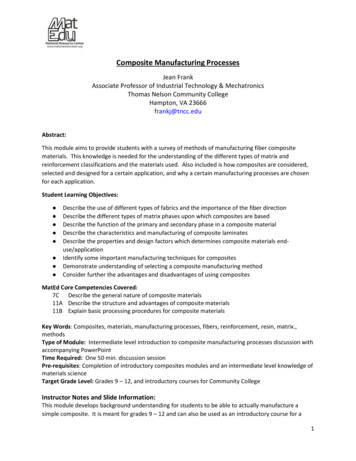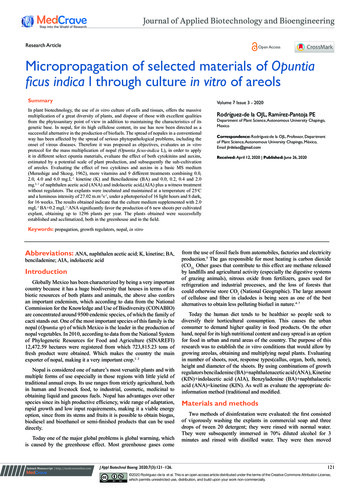
Transcription
Journal of Applied Biotechnology and BioengineeringResearch ArticleOpen AccessMicropropagation of selected materials of Opuntiaficus indica l through culture in vitro of areolsSummaryVolume 7 Issue 3 - 2020In plant biotechnology, the use of in vitro culture of cells and tissues, offers the massivemultiplication of a great diversity of plants, and dispose of those with excellent qualitiesfrom the phytosanitary point of view in addition to maintaining the characteristics of itsgenetic base. In nopal, for its high cellulose content, its use has now been directed as asuccessful alternative in the production of biofuels. The spread of nopales in a conventionalway has been affected by the spread of serious phytopathological problems, including theonset of virous diseases. Therefore it was proposed as objectives, evaluates an in vitroprotocol for the mass multiplication of nopal (Opuntia ficus-indica L), in order to applyit in different select opuntia materials, evaluate the effect of both cytokinins and auxins,estimated by a potential scale of plant production, and subsequently the sub-cultivationof areoles. Evaluating the effect of two cytokines and auxins in a basic MS medium(Murashige and Skoog, 1962), more vitamins and 9 different treatments combining 0.0,2.0, 4.0 and 6.0 mg.L-1 kinetine (K) and Benciladenine (BA) and 0.0, 0.2, 0.4 and 2.0mg.L-1 of naphthalen acetic acid (ANA) and indolacetic acid,(AIA) plus a witness treatmentwithout regulators. The explants were incubated and maintained at a temperature of 25oCand a luminous intensity of 27.02 m.m-2s-1, under a photoperiod of 16 light hours and 8 dark,for 16 weeks. The results obtained indicate that the culture medium supplemented with 2.0mgL-1 BA 0.2 mgL-1 ANA significantly favor the production of 6 new shoots per cultivatedexplant, obtaining up to 1296 plants per year. The plants obtained were successfullyestablished and acclimatized, both in the greenhouse and in the field.Rodríguez-de la OJL, Ramírez-Pantoja PEDepartment of Plant Science, Autonomous University Chapingo,MexicoCorrespondence: Rodríguez-de la OJL, Professor, Departmentof Plant Science, Autonomous University Chapingo, México,EmailReceived: April 12, 2020 Published: June 26, 2020Keywords: propagation, growth regulators, nopal, in vitroAbbreviations: ANA, naphthalen acetic acid; K, kinetine; BA,benciladenine; AIA, indolacetic acidIntroductionGlobally Mexico has been characterized by being a very importantcountry because it has a huge biodiversity that houses in terms of itsbiotic resources of both plants and animals, the above also confersan important endemism, which according to data from the NationalCommission for the Knowledge and Use of Biodiversity (CONABIO)are concentrated around 9500 endemic species, of which the family ofcacti stands out. One of the most important species of this family is thenopal (Opuntia sp) of which Mexico is the leader in the production ofnopal vegetables. In 2010, according to data from the National Systemof Phylogenetic Resources for Food and Agriculture (SINAREFI)12,472.59 hectares were registered from which 723,815.23 tons offresh product were obtained. Which makes the country the mainexporter of nopal, making it a very important crop.1–3Nopal is considered one of nature’s most versatile plants and withmultiple forms of use especially in those regions with little yield oftraditional annual crops. Its use ranges from strictly agricultural, bothin human and livestock food, to industrial, cosmetic, medicinal toobtaining liquid and gaseous fuels. Nopal has advantages over otherspecies since its high productive efficiency, wide range of adaptation,rapid growth and low input requirements, making it a viable energyoption, since from its stems and fruits it is possible to obtain biogas,biodiesel and bioethanol or semi-finished products that can be useddirectly.Today one of the major global problems is global warming, whichis caused by the greenhouse effect. Most greenhouse gases comeSubmit Manuscript http://medcraveonline.comJ Appl Biotechnol Bioeng. 2020;7(3):121‒126.from the use of fossil fuels from automobiles, factories and electricityproduction.5 The gas responsible for most heating is carbon dioxide(CO2). Other gases that contribute to this effect are methane releasedby landfills and agricultural activity (especially the digestive systemsof grazing animals), nitrous oxide from fertilizers, gases used forrefrigeration and industrial processes, and the loss of forests thatcould otherwise store CO2 (National Geographic). The large amountof cellulose and fiber in cladodes is being seen as one of the bestalternatives to obtain less polluting biofuel in nature.4–7Today the human diet tends to be healthier so people seek todiversify their horticultural consumption. This causes the urbanconsumer to demand higher quality in food products. On the otherhand, nopal for its high nutritional content and easy spread is an optionfor food in urban and rural areas of the country. The purpose of thisresearch was to establish the in vitro conditions that would allow bygrowing areolas, obtaining and multiplying nopal plants. Evaluatingin number of shoots, root, response types(callus, organ, both, none),height and diameter of the shoots. By using combinations of growthregulators benciladenine (BA) naphthalenacetic acid (ANA), Kinetine(KIN) indolacetic acid (AIA), Benzyladenine (BA) naphthalaceticacid (ANA) kinetine (KIN). As well as evaluate the appropriate deinformation method (traditional and modified.Materials and methodsTwo methods of disinfestation were evaluated: the first consistedof vigorously washing the explants in commercial soap and threedrops of tween 20 detergent; they were rinsed with normal water.They were subsequently immersed in 70% diluted alcohol for 3minutes and rinsed with distilled water. They were then moved121 2020 Rodríguez-de la et al. This is an open access article distributed under the terms of the Creative Commons Attribution License,which permits unrestricted use, distribution, and build upon your work non-commercially.
Micropropagation of selected materials of Opuntia ficus indica l through culture in vitro of areolsto a 20% sodium hypochlorite (NaClO) solution and stirred for 20minutes. They were immediately rinsed with oxygenated water(H2or2) at30% for one hour. After that time, the explants were rinsedagain with sterile water inside the previously disinfected laminarflow cabinet. Another desinfestation, process consisted of washingwith commercial detergent and three drops of tween 80 detergent;they were subsequently placed in 70% ethanol for two minutes. Theywere then moved to a 10% sodium hypochlorite (NaCl) solution for10 minutes. They were immediately stirred with oxygenated water(H2or2) at 15% for 5 minutes. Subsequently, the explants were rinsedwith sterile water inside the previously disinfected laminar flow hood.Once the desinfestation processes were evaluated, experiments withgrowth regulators (auxins and cytokines) were established at differentconcentrations to stimulate in vitro sprouting and multiplication ofnopal explants (Table 1).Table 1 Concentrations in the different -1)AIA(mg.L-1)T0MS*100 %0000T1MS100 %20.200T2MS100 %40.400T3MS100 %6200T4MS100 %0020.2T5MS100 %0040.4T6MS100 %0062T7MS 100%2060T8MS100 %40.240T9MS100 %60.420Copyright: 2020 Rodríguez-de la et al.122response, organogenesis, presence of both responses and unansweredexplants in the different treatments. In organogenesis, the bestconcentration was 2.0 mgL-1 KIN 0.2 mgL-1 AIA, this is due to thecombination of a cytokinin (BA) and an auxin (AIA), this combinationproduces rapid cell division, usually small and undifferentiated cells.The concentration 6.0 mg L-1BA 2.0 mg L1 KIN 0.4 mgL-1 ANAwas the one that presented the highest percentage of calluses (63%),this is consistent with what Rost (1998 mentions), in which it says thatan intermediate concentration of cytokinins and a low concentrationof auxins causes the cells to remain indifference, forming masses oftissue called calluses. This matches Rosa who noted that explantstreated with Bencylamino purine (BAP) produced callus tissue, wasnot too abundant induction of sprouts.Number of sprouts: After 16 weeks of incubation are presentedin Figure 6. Statistical analysis showed that there are significantdifferences between the effects inducing treatments on that variable(p-value x 0.012). Treatment 1, (MS 100% 2.0mgL-1BA 0.2 mgL-1ANA) average obtaining 5.57 sprouts by areola cultivated, standingout as the best response and according to the results and statisticallyexceeded treatments 3,(MS 100% 6.0 mgL-1BA 2.0 mgL-1 ANA)and4, (MS 100% 2.0 mgL-1KIN 0.2mgL-1 AIA) whose results forthis variable averaged 0.93 and 0.71 shoots per areola respectively;According to the results observed in treatment 1, no statisticallysignificant differences were observed with the rest of the treatments(Figure 1).The variables evaluated were number of shoots and roots,formation of callus and organ, height and diameter of shoots, fork,and acclimatization. During this research, in vitro materials wereincubated at a temperature of 26 C during the day and 22 -24 atnight and a photoperiod of 16 hours of light intensity (27.02 mmm-2.s-1) and8 hours of darkness.The plants obtained were acclimatized in a glass greenhouse,4mx4m. Each plant was transplanted into a single-cell glass withpeat moss, which was placed with a straw and a plastic bag. For fourmonths, plant survival data was being taken to scale plant production.The escalation was carried out by taking on average the outbreaksobtained from the best treatments and related over time to determinethe number of plants that would be obtained in a certain time frame.The experiment was conducted in a completely azar design. No 9treatments were performed with 12 repetitions and a general witness.Quantitative results were analyzed using Minitab software 17.1.0v.13 (Minitab Inc. ) by analyzing means of a factor with a 95%confidence level. The Tukey test was subsequently applied with asignificance level of 0.05.8Results and discussionDisinfestation method: The appropriate method for carrying outdesinfestation in explants was the modified method, which showed100% effectiveness in disinfecting explants without causing oxidationor necrosing. While under the traditional method all explants werenecrotized. Responses types: Figure 1 shows the averages of the callusFigure 1 Response of explants to organogenesis and callogenesis in differenttreatments, at 16 weeks.For the variable number of sprouts obtained in vitro, treatmentwith 2.0 mgL-1 of BA 0.2 mgL-1 ANA, significantly increased thisresponse. These results were similary with that reported by Murashige6in which they obtained the highest number of sprouts using 2.0 mgL-1BA (Figure 2). Other results on this variable are reported by Ojeda etal.7 who is obtained more development in Opuntia ficus-indica sproutscombining the BA:ANA at concentrations of 5.0 mg.L-1 and 0.25mg.L-1 respectively; Other results observed in the present research,was that by increasing the levels in the combination of BA:ANA orby changing BA to Kinetin, was less formation of new outbreaks isinduced (Figure 3).The length of sprouts: Figure 4 The results obtained with respect tothe variable length of new sprouts obtained in vitro after 16 weeksof incubation. Statistical analysis showed that there are significantdifferences between the effects of treatments on the variable lengthof outbreaks (-0.003). In treatment 6, (4.88 cm) the longest length ofsprouts was observed. The results in the statistical analysis showed noCitation: Rodríguez-de la OJL, Ramírez-Pantoja PE. Micropropagation of selected materials of Opuntia ficus indica l through culture in vitro of areols. J ApplBiotechnol Bioeng. 2020;7(3):121‒126. DOI: 10.15406/jabb.2020.07.00225
Micropropagation of selected materials of Opuntia ficus indica l through culture in vitro of areolsdifferences with those obtained in the treatments T1, T4, T5, T7 andT8. This response statistically exceded treatments 2, 3 and 9, (1.5,1.40, and 1.04 cm respectively). The length of the sprouts observed intreatment 6 (100 % 6.0 mg MS-1KIN 2.0 mgL-1 AIA), is due to thehigh concentration of cytokinins in the culture medium, this resultscoincides with Jankiewicz8 reported where it also stands out as a jointform that the presence of auxins stimulates do elongation and celldivision.Figure 2 Response of explants to sprouting in different treatments at 16weeks.*Average with the same letter are statistically equal according to Tukey α 0.05.Copyright: 2020 Rodríguez-de la et al.123Stem diameter: Figure 5 the statistical analysis performed showedthat there are no significant differences between the effects inducingtreatments on the variable diameter of stems (-0.032). The resultsobtained in the culture medium used, and the combination of growthregulators as well as their respective doses in all treatments, showedno significant statistical difference between treatments for the variablediameter of the stem.Figure 5 Response of the nopal stem diameter of the different in vitro culturetreatments at16 weeks.T1: MS 100% 2.0 mg L-1BA 0.2 mg L-1 ANA, T2: MS 100% 4.0 mg L-1BA 0.4mg L-1 ANA, T3: MS 100% 6.0 mg L-1BA 2.0 mg L-1 ANA, T4: MS 100% 2.0mg L-1KIN 0.2 mg L-1 AIA, T5: MS 100% 4.0 mg L-1KIN 0.4 mg L-1 AIA, T6:MS 100% 6.0 mg L-1KIN 2.0 mg L-1 AIA, T7: MS 100% 2.0 mg L-1BA 6.0 mgL-1 KIN, T8: MS 100% 4.0 mg L-1BA 4.0 mg L-1 KIN 0.2 mg L-1ANA y T9: MS100% 6.0 mg L-1BA 2.0 mg L-1 KIN 0.4 mg L-1ANA.Figure 3 Explant response to the number of sprouts emitted by in vitroincubated nopal areola at 16 weeksT1: MS 100% 2.0 mg L-1BA 0.2 mg L-1 ANA, T4: MS 100% 2.0 mgL-1KIN 0.2 mg L-1AIA.Figure 4 Length of new sprouts in vitro in the different treatments of in vitroculture at 16 weeks.*Average with the same letter are statistically equal according to Tukey α 0.05.T1 : MS 100% 2.0 mg L-1BA 0.2 mg L-1 ANA, T2: MS 100% 4.0 mg L-1BA 0.4mg L-1 ANA, T3: MS 100% 6.0 mg L-1BA 2.0 mg L-1 ANA, T4: MS 100% 2.0mg L-1KIN 0.2 mg L-1 AIA, T5: MS 100% 4.0 mg L-1KIN 0.4 mg L-1 AIA, T6:MS 100% 6.0 mg L-1KIN 2.0 mg L-1 AIA, T7: MS 100% 2.0 mg L-1BA 6.0 mgL-1 KIN, T8: MS 100% 4.0 mg L-1BA 4.0 mg L-1 KIN 0.2 mg L-1ANA y T9: MS100% 6.0 mg L-1BA 2.0 mg L-1 KIN 0.4 mg L-1ANA.Number of roots: Figure 6, the statistical analysis of the resultsrevealed significant differences between treatments according toregulatory combinations and doses used on the root number variable(-0.004). For this variable, the stems were subculture in vitro, indifferent treatments and combinations of growth regulators and intreatment 6 was presented on average 5.92 roots, standing out as thebest response for the greatest number of roots obtained, surpassingthe results obtained in treatment 9, who showed no response whennot presenting roots. For this variable under study, it was notablethat in most treatments they had root development, so the analysisof statistics and their variance did not detect significant differencesbetween them and are shown as statistically equal with treatment 6. Inthe results obtained it was found that the combination KIN:AIA, wasthe presenting a better response towards the stimulation of a greaternumber of roots,, and where the presence of auxins was highlighted,since independent of concentrations, it promotes the generation ofroots in subcultured stems in vitro. Rosa showed, that the rooting ofTurbinicarpus rioverdensis, T. schmiedickeanus subsp. gracilis and T.isabelae (species belonging to the family cactaceae), was performedin an efficient manner with the presence of auxins. Garcia reported thatthe maximum development of roots was added to the culture mediaindolbutyric acid (AIB). However, other results reported by Escobar,indicate that some concentrations and types of auxins induced theformation of callus in the basal part of the shoots cultivated in vitroconditions.Bifurcation of stems: Figure 7 shows the incidence of stems withbifurcation in the different treatments. The bifurcation of stemsobtained in vitro is an important variable, since for each fork allows usto have a new sprouts, to be grown in vitro, highlighting treatment7, inCitation: Rodríguez-de la OJL, Ramírez-Pantoja PE. Micropropagation of selected materials of Opuntia ficus indica l through culture in vitro of areols. J ApplBiotechnol Bioeng. 2020;7(3):121‒126. DOI: 10.15406/jabb.2020.07.00225
Micropropagation of selected materials of Opuntia ficus indica l through culture in vitro of areolswhich 15.4% of the stems presented up to three new sprouts (shoots)per cultivated stem, in most treatments they had 30.8% of new shootsthrough the bifurcation. Treatment 1, showed 7.14 % in bifurcation byone stem cultivated and 7.14 % with two new sproutss, giving a totalof 14.28 % response of new shoots through the bifurcations presentedon the stems. Treatments 4 and 5 showed only a news sprouts of7.14% and 9.1% respectively (Figure 8). The rest of the treatmentsshowed no significant difference between treatments and this variableof new shoots through the bifurcation of the stems grown in vitro. Theresponse to the emission of new shoots by cultivated stem, observedin treatment 7, was basically stimulated by the presence of typecytokinin’s and concentration in the culture medium, this responsewas also reported by Jankiewicz8 who reported that in many explantsgrown in vitro usually the addition of cytokines promote the sproutingof axillary buds, and stimulate the expansion of leaves in addition toretardation.9Figure 6 (a)Response of the number of nopal roots to the different in vitroculture treatments at 16 weeks.Copyright: 2020 Rodríguez-de la et al.124Figure 7 Response of the number of bifurcations per nopal sprout grown invitro to treatments 1, 4, 5, and 7, at 16 weeks.T1: MS 100% 2.0 mg L-1BA 0.2 mg L-1 ANA, T4: MS 100% 2.0 mg L-1KIN 0.2mg L-1 AIA, T5: MS 100% 4.0 mg L-1KIN 0.4 mg L-1 AIA y T7: MS 100% 2.0mg L-1BA 6.0 mg L-1 KINFigure 8 (a) New Sprouts emitted by areol of nopal incubated in vitro intreatment in 7 at 16 weeks.T7: MS 100% 2.0 mg L-1BA 6.0 mg L-1 KINT1: MS 100% 2.0 mg L-1BA 0.2 mg L-1 ANA, T2: MS 100% 4.0 mg L-1BA 0.4mg L-1 ANA, T3: MS 100% 6.0 mg L-1BA 2.0 mg L-1 ANA, T4: MS 100% 2.0mg L-1KIN 0.2 mg L-1 AIA, T5: MS 100% 4.0 mg L-1KIN 0.4 mg L-1 AIA, T6:MS 100% 6.0 mg L-1KIN 2.0 mg L-1 AIA, T7: MS 100% 2.0 mg L-1BA 6.0 mgL-1 KIN, T8: MS 100% 4.0 mg L-1BA 4.0 mg L-1 KIN 0.2 mg L-1ANA y T9: MS100% 6.0 mg L-1BA 2.0 mg L-1 KIN 0.4 mg L-1ANA.Figure 8 (b) Growth of nopal plants at different growing sites.Figure 6(b) Response in rooting to different in vitro culture treatments at16 weeks.T6: MS 100% 6.0 mg L-1KIN 2.0 mg L-1 AIA, T8: MS 100% 4.0 mg L-1BA 4.0mg L-1 KIN 0.2 mg L-1ANA y T9: MS 100% 6.0 mg L-1BA 2.0 mg L-1 KIN 0.4mg L-1ANA.Acclimatization: Nopal plantlets obtained in vitro and rooted weretransferred to greenhouse conditions to be acclimatized and basicallyplant survival rates were assessed. Figure 9 shows the growth ofplants during acclimatization in the greenhouse and field. The nopalplants obtained in vitro conditions for acclimatization, were placed ina peat moss substrate and without additional nutrients, showing100%survival. This stage of plant acclimatization was also reported byBhau10 obtaining the same stage survival of Coryphantha elephantidensLem plants (Figure 10). We can observe the acclimatization anddevelopment of plants in the greenhouse.Figure 9 Plants acclimatized in the greenhouse after 46 weeks of beingplanted.Citation: Rodríguez-de la OJL, Ramírez-Pantoja PE. Micropropagation of selected materials of Opuntia ficus indica l through culture in vitro of areols. J ApplBiotechnol Bioeng. 2020;7(3):121‒126. DOI: 10.15406/jabb.2020.07.00225
Micropropagation of selected materials of Opuntia ficus indica l through culture in vitro of areolsCopyright: 2020 Rodríguez-de la et al.125huge number of sprouts. Thus an example of scaling production ofnopal plants over a year. This report coincides with Rosa et al.,9 inthe species T. pseudomacrochele subsp. lausseri, in which an averageof 26.3 sprouts per explant was obtained in the same period, usingin this case 3.33 mg.L-1 bencilaminopurine (BAP). According to thereasoning described above, with this efficiency it would be possible,in theory, to generate more than 300-106 outbreaks in the same time.ConclusionFigure 10 Treatment with better response, for multiple obtaining of sproutsin nopal.T1 : MS 100% 2.0 mg L-1BA 0.2 mg L-1 ANA , T5: MS 100% 4.0 mg L-1KIN 0.4mg L-1 AIA,The best process of explant desinfestation was determined,managing to establish an effective cleaning method, free, of fungi andbacterium. The formation of new sprouts was obtained in a 100% MSmedium supplemented with 6.0 mgL-1KIN 2.0 mgL-1 AIA. The highestnumber of sprouts was obtained in a 100% MS medium supplementedwith 2.0 mgL-1BA 0.2 mgL-1ANA.The in vitro strategies used, allowto obtain, and multiply plants on an important scale in the short term,but also preserve the original genetic characteristics of the plants. Thelongest stem length and number of roots was obtained in a 100% MSmedium supplemented with 6.0 mgL-1KIN (cytokinin) 2.0 mgL-1AIA(auxin).According to the results obtained, the scaling of productionof in vitro plants of nopal, in the four cycles per year is 1294 plants,from a single explant. and potentially can get up to 456,976 outbreaksin a year.Zhuang et al.11 remedied 90% survival in the acclimatization stageof Opuntia ficus-indica plants in the greenhouse. Escobar et al.12 theyobtained 100% survival in soil transplantation to soil of Opuntiaamyclaea, and in other species of Turbinicarpus were obtained forthis same stage plant survival in 65 to 98%. In some cacti such asNotocactus, acclimatization is a critical process and sometimes onlya survival of 20% Medeiros et al.4 is reported. Finally, the plantsobtained from nopal already acclimated, were taken to the field of“La Nopalera”, located in the Experimental Agricultural Field of theAutonomous Chapingo University.AcknowledgmentsPlant production scaling: The estimate consists of obtaining andmultiplication plants that can potentially be obtained exponentiallyfrom an explant (areola) cultivated in vitro, the results obtained fornopal, allowed to calculate the amount of plants that can be obtainedin a certain time (one year), taking as a reference in this work thehighest average regeneration of new shoots that was 5.57 shoots,which was taken as 6. Applying the following data allow estimatethe number of plants that could theoretically be obtained in 14 weeks.ReferencesNbci XIn: Nb, number of average outbreaks obtained from a bud; ci, cyclewhere i 0, 1, 2, 3 Each cycle includes 14 weeks; X, plants obtained.In the scale of production of in vitro nopal plants, it can be estimatedthat in one year, up to 1296 shoots(plants) could be obtained from asingle yolk (theoretically). It is of great importance since in additionto maintaining the genetic basis of the plants obtained you can haveplants of excellent phytosanitary quality free of pathogens. In thisresearch the estimated data are mainly presented the average resultsfor each of the variables studied, although there were other responsesthat exceed the estimated data, since for example, in treatments 5 and6, some subcultured stems in vitro (explants)) developed up to 26 and20 new shoots, respectively (Figure 10).For treatment 5 (100% 4.0mg MS.L-1KIN 0.4 mg.L-1 AIA) a stemwas obtained, a maximum regeneration potential of up to26new shootsper subculture areola. Given this data, you can obtain and multiply aNone.Conflicts of interestThe author declares that there is no conflict of interest.FundingNone.1. Alvarado BE, Cháble MF, Morán VN, et al. In vitro regeneration andProximal Analysis of Nopal Opuntia ficusindica COPENA 1. InstitutoTecnológico de Roque, Celaya, Guanajuato; 2007.2. Giusti P, Vitti D, Fiocchetti F, et al. In vitro propagation of threeendangered cactus species. Sci Hort. 2002;95(4):319–332.3. Leifert C, Morris CE, Waites WM. Ecology of microbial saprophytesand pathogens in tissue culture and field grown plants: Reason forcontamination problems in vitro. Critical Reviews in Plant Sciences.1994. p. 139–183.4. Medeiros LA, Roberval-Cassia SR, Gallo LA, et al. In vitro propagationof Notocactus magnificus. Plant Cell Tiss Org Cult. 2006;84:165–169.5. Vidales FI. Effect of Growth Regulators on The Processes ofOrganogenesis and Somatic Embriogenesis of Avocado PerseaAmericana Mill. (Doctoral thesis) University of Colima. ColimaMexico; 2002.6. Murashige T, Skoog F. A revised medium for rapid growth andbioassays with tobacco tissue cultures. Physiol Plant. 1962;15:37–397.7. Ojeda MC, Vázquez AR, Rodríguez FH. In vitro establishment ofNopal Opuntiaficus-indica. Faculty of Agronomy. AutonomousUniversity of Nuevo León. Journal of Public Health and Nutrition.2010.8. Jankiewcz SJ. Regulators of growth, development and resistance inplants. Department of Phytotechnics. Horticulture Institute. ChapingoAutonomous University; 2003.Citation: Rodríguez-de la OJL, Ramírez-Pantoja PE. Micropropagation of selected materials of Opuntia ficus indica l through culture in vitro of areols. J ApplBiotechnol Bioeng. 2020;7(3):121‒126. DOI: 10.15406/jabb.2020.07.00225
Micropropagation of selected materials of Opuntia ficus indica l through culture in vitro of areolsCopyright: 2020 Rodríguez-de la et al.1269. Rosa Carrillo ML, Pérez-Molphe-Balch E. In vitro propagation of eightspecies or subspecies of Turbinicarpus (Cactaceae). In Vitro Cell DevBiol Plant. 2005;41:540–545.11. Zhuang T, Zhang J, Yu J. Studies on the rapid propagation of Opuntiaficus-indica Mill via tissue culture. Journal of Shanghai JiaotongUniversity Agricultural Science. 2004;22(3):313–315.10. Bhau BS. Regeneration of Coryphanthaelephantidens (Lem.).(Cactaceae) from root explants. Scientia Horticulturae.1999;81(3):337–344.12. Escobar AHA, Villanueva AVM, Villegas MA. Opuntiamicropropagatión by axillary proliferation. Plant Cell Tissue andOrgan Culture. 1986. 277 p.Citation: Rodríguez-de la OJL, Ramírez-Pantoja PE. Micropropagation of selected materials of Opuntia ficus indica l through culture in vitro of areols. J ApplBiotechnol Bioeng. 2020;7(3):121‒126. DOI: 10.15406/jabb.2020.07.00225
with sterile water inside the previously disinfected laminar flow hood. Once the desinfestation processes were evaluated, experiments with growth regulators (auxins and cytokines) were established at different concentrations to stimulate in vitro sprouting and multiplication of nopal explants (Table 1).
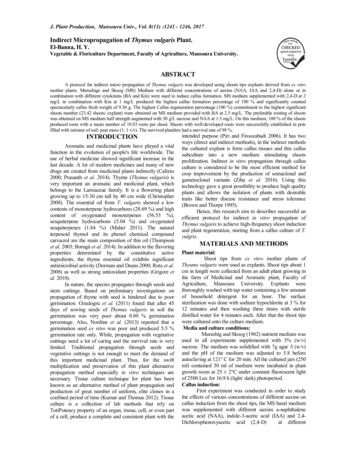
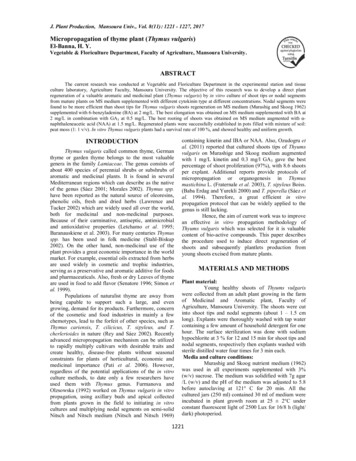



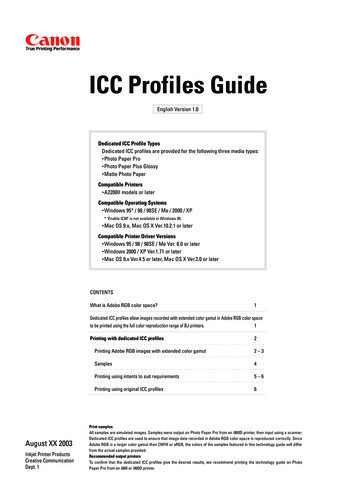


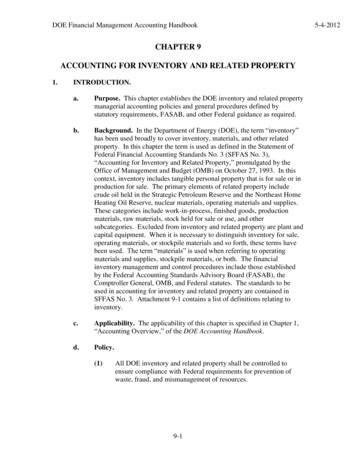
![Materials for Engineering [by John Martin]](/img/14/materials-20for-20engineering-20-5bby-20john-20martin-5d.jpg)
